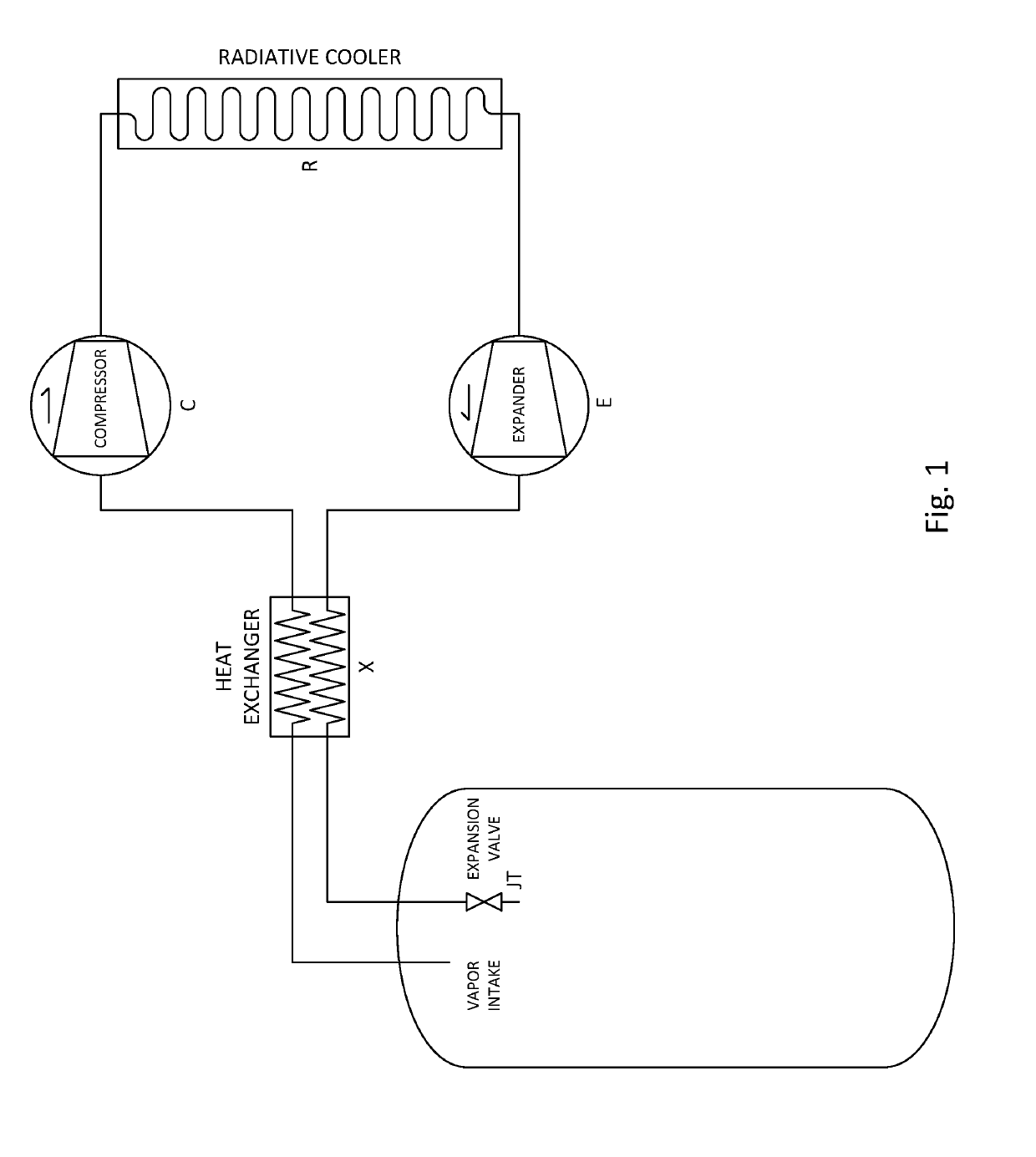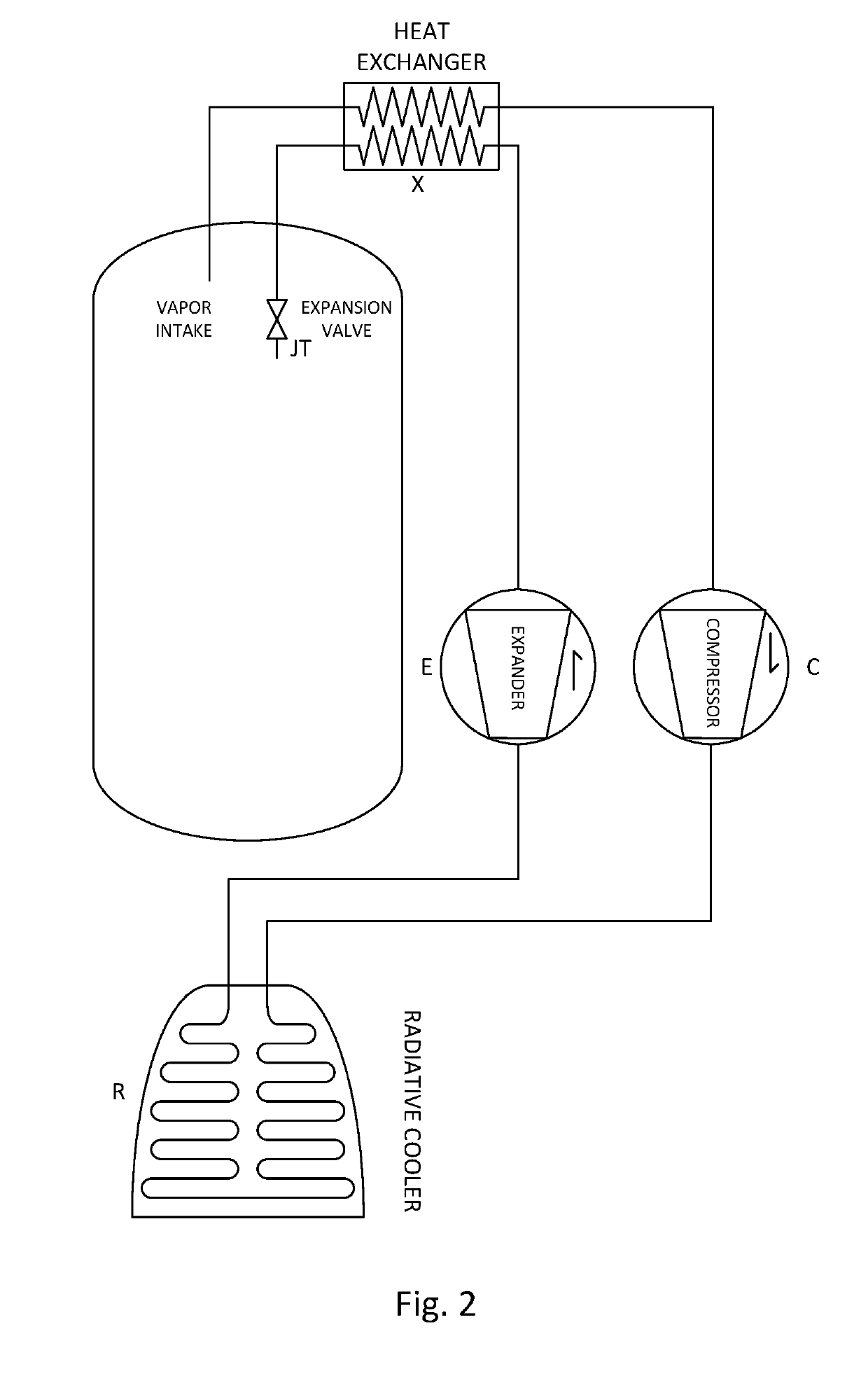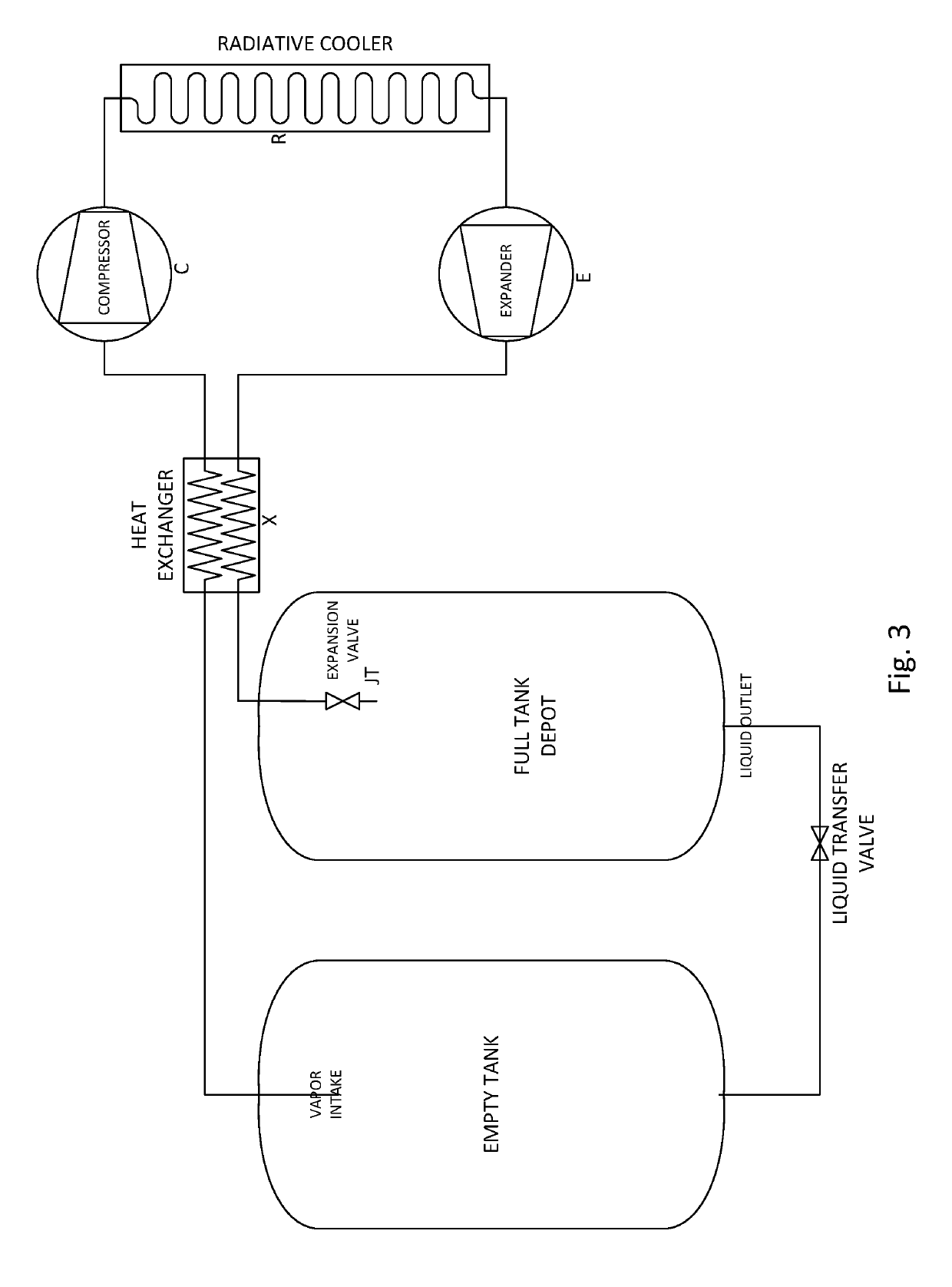Autogenous Cooling Method for In Space Storage and Transfer of Cryogenic Rocket Propellants
a technology of rocket propellant and autogenous cooling, which is applied in the operation mode of machines, cosmonautic vehicles, lighting and heating apparatus, etc., can solve the problems of failure of cryocoolers or insufficient power to run them continuously, affecting the efficiency of the system, so as to increase the cooling capacity and system efficiency
- Summary
- Abstract
- Description
- Claims
- Application Information
AI Technical Summary
Benefits of technology
Problems solved by technology
Method used
Image
Examples
Embodiment Construction
[0012]A compressor (C) draws propellant vapor from the tank through a heat exchanger (X) which increases the vapor temperature. The compressor increases the flow pressure and the outlet stream flows through a radiative cooling element (R) where it rejects heat energy to space. The fluid returning from the cooling element flows through an expander element (E) where some of the pressure energy in the flow is recovered. The work output from this compressor may be used to partially power the compressor, increasing overall system efficiency. From there the fluid passes through the other side of the heat exchanger, which further lowers its temperature, before entering the final pressure reducing valve (JT). This final flow restriction, or Joule-Thomson device, induces some amount of condensation in the fluid stream re-entering the storage vessel.
[0013]Many liquid propellant rocket engines utilize a regenerative cooling system. This cooling method directs cryogenic propellant through parts...
PUM
 Login to View More
Login to View More Abstract
Description
Claims
Application Information
 Login to View More
Login to View More - R&D
- Intellectual Property
- Life Sciences
- Materials
- Tech Scout
- Unparalleled Data Quality
- Higher Quality Content
- 60% Fewer Hallucinations
Browse by: Latest US Patents, China's latest patents, Technical Efficacy Thesaurus, Application Domain, Technology Topic, Popular Technical Reports.
© 2025 PatSnap. All rights reserved.Legal|Privacy policy|Modern Slavery Act Transparency Statement|Sitemap|About US| Contact US: help@patsnap.com



